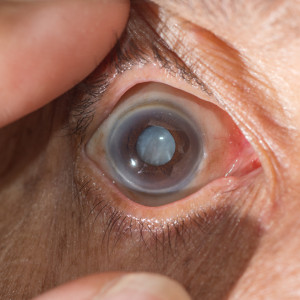Introduction
By all means, a cataract is an opacity due to degeneration of the lens of the eye.
Certainly, as we age there is a normal degeneration of the lens of the eye, which starts in a very subtle way in the 50’s or 60’s and gradually deteriorates with further aging. Eventually there is a time when the cataract is getting so dense that prescription eyeglasses or contact lenses will not correct the loss of vision that is associated with this. At this instant the eye specialist will recommend cataract surgery where the cataract is removed and replaced with a plastic lens or silicone lens.
Signs and symptoms
Notably, there is a progressive loss of vision without pain. In this case light sensitivity often is a problem, particularly very bright lights. Truly, night vision is unreliable with complaints of being blinded by oncoming traffic.
There will be a need for more changes in prescription glasses or contact lenses. In some cases where there is swelling of the lens there can be an associated glaucoma, in which case there would be pain in the affected eye.
Diagnostic tests
To point out, the eye specialist measures the intraoccular pressure before dilatation of the pupil. Certainly, the ophthalmologist also does an eye examination to rule out a narrow angle in the anterior eye chamber. Surely, this increases the intraoccular pressure and can be a sign of glaucoma. Specifically, slit lamp examination reveals a cataract as a gray or brown/yellow opacity in the lens. There are also inborn (congenital) forms of cataracts in children. Here are more findings for various patients with cataracts (see images).
Treatment
Before cataract surgery the eye specialist excludes conditions such as macular degeneration, glaucoma and some other conditions that do not respond to surgery.
With a prescreened population like this the success rate for cataract surgery with lens implantation is about 95%, one of medicine’s most rewarding success stories. The procedure is done on an outpatient basis under local anesthetic.
The ophthalmologist performs cataract surgery under a local anesthetic in combination with intravenous sedation. Cataract removal (called “cataract extraction”) typically involves an intraoccular lens implant. The ophthalmologist replaces the old lens with an artificial lens (made of plastic or silicone material).
Following the surgery the physician puts the patient on prophylactic antibiotic drops and corticosteroid drops for a period of about 4 weeks after the surgery. This keeps the swelling following the surgery to a minimum and prevents infection. Quite often the patient will not need glasses after the surgery. A minority of patients will need very weak prescription glasses or contact lenses following this surgery to achieve perfect vision.
More information on how vegetables prevent cataracts in this blog.
New developments of how to get rid of contact lenses, glasses and cataracts are described here.
References
1. The Merck Manual (Cataracts)
2. Ferri: Ferri’s Clinical Advisor: Instant Diagnosis and Treatment, 2004 ed., Copyright © 2004 Mosby, Inc.
3. Rakel: Conn’s Current Therapy 2004, 56th ed., Copyright © 2004 Elsevier
4. Suzanne Somers: “Breakthrough” Eight Steps to Wellness– Life-altering Secrets from Today’s Cutting-edge Doctors”, Crown Publishers, 2008







